Everything You Need to Know About Window Heat Pumps
Key Takeaways
- Window heat pumps provide both heating and cooling from one unit, eliminating seasonal appliance changes.
- These devices achieve 75-150% better heating efficiency than electric resistance heaters.
- Optimal performance occurs between 35-60°F outdoor temperatures; efficiency decreases in extreme cold.
- Installation requires adequate electrical service (115V or 230V) and appropriately sized window openings.
- Smart window AC thermostat upgrades reduce energy consumption by 15-25% through scheduling and automation.
- Monthly filter cleaning and seasonal coil maintenance preserve efficiency and extend equipment life.
A window heat pump is revolutionizing the way people approach year-round climate control in their homes. These versatile units handle both heating and cooling from a single compact device that fits right into your window opening. If you've been asking yourself what a window heat pump is or wondering how window heat pumps work, you're about to get all your answers. This guide covers everything from efficiency ratings to installation, helping you decide if a heat pump window unit makes sense for your space.
The Basics of Window Heat Pumps
Window heat pumps represent a significant advancement over traditional window air conditioners. Unlike standard AC units that only cool, these devices reverse their operation to provide warmth during colder months. Think of them as two appliances in one package—eliminating the need to swap units seasonally.
The fundamental difference lies in their reversible refrigeration cycle. Traditional window ACs move heat from inside your room to the outdoors. A heat pump window unit does this during summer, but flips the process during winter, extracting warmth from outside air and delivering it indoors.
Most window heat pumps measure from 18 to 24 inches in height and extend 15 to 20 inches into your room. They weigh anywhere from 60 to 120 pounds, depending on their capacity. Standard models fit windows with openings between 23 and 36 inches wide, though you'll find options for both smaller and larger spaces.
How Window Heat Pumps Work?
Cooling Mode Operation
During warm weather, the unit functions like a standard air conditioner:
- The evaporator coil (inside section) absorbs heat from your room
- Refrigerant carries this thermal energy to the compressor
- The compressor pressurises the refrigerant, raising its temperature
- The condenser coil (outside section) releases heat to the outdoor air
- The expansion valve reduces refrigerant pressure, cooling it for another cycle
Heating Mode Operation
When temperatures drop, a reversing valve switches the refrigerant flow direction:
- The outdoor coil becomes the evaporator, extracting heat from outside air
- Even at 40°F, outdoor air contains usable thermal energy
- The compressor concentrates this captured heat
- The indoor coil becomes the condenser, releasing warmth into your room
- Fans distribute this heated air throughout your space
The Refrigerant's Role
Modern units use R-410A or R-32 refrigerants. These substances change between liquid and gas states at specific temperatures and pressures, making heat transfer possible. The refrigerant cycles continuously, moving thermal energy from one location to another rather than generating heat through combustion.

Are Window Heat Pumps Efficient?
Energy Efficiency Ratings
Heat pump window units use two key metrics:
SEER2 (Seasonal Energy Efficiency Ratio 2): Measures cooling efficiency. Current models range from 9.0 to 12.0 SEER2. Higher numbers mean better efficiency. A unit with 10.0 SEER2 uses roughly 20% less electricity than an 8.0 SEER2 model for the same cooling output.
HSPF2 (Heating Seasonal Performance Factor 2): Measures heating efficiency. Quality window heat pumps achieve 6.0 to 8.5 HSPF2 ratings. For comparison, electric baseboard heaters have an HSPF2 equivalent of 3.4, making heat pumps 75-150% more efficient.
Real-World Performance Numbers
A typical 12,000 BTU window heat pump consumes about 1,200 watts during cooling and 1,000-1,400 watts during heating. Compare this to:
- A 1,500-watt space heater that produces 5,100 BTUs
- The same heat pump produces 10,000-12,000 BTUs while using similar power
This efficiency translates to tangible savings. Running a heat pump window unit for heating costs approximately $0.12-$0.17 per hour at average electricity rates, compared to $0.18 per hour for a space heater that produces significantly less warmth.
Temperature Limitations
Efficiency drops as outdoor temperatures fall. Most window heat pumps maintain good performance down to 35-40°F. Below this range, they work harder and produce less heat. At 20°F, output might decrease by 40-50% compared to performance at 47°F.
Many units include supplemental electric resistance heating that activates during extreme cold. This backup heating matches the efficiency of a space heater—still functional, but less economical than pure heat pump operation.
Installation Requirements and Considerations
 Electrical Requirements
Electrical Requirements
Most residential units need dedicated 115-volt or 230-volt circuits. Larger capacity models (14,000+ BTU) typically require 230-volt service with 15-20 amp circuits. Check your home's electrical panel before purchasing. Installing a new circuit costs $200-$500 through a licensed electrician.
Window Specifications
Your window opening must accommodate the unit's dimensions. Key measurements include:
- Minimum and maximum window width (typically 23-36 inches)
- Window sill depth (needs 4-6 inches minimum)
- Window height (at least 14 inches for most models)
Double-hung windows work best. Sliding windows require special installation kits. Casement windows generally won't accommodate standard window heat pumps.
Structural Support
These units weigh significantly more than basic window ACs. Older windows may need reinforcement. The window frame must support 60-120 pounds concentrated on the sill. Some installations benefit from:
- Support brackets mounted to exterior walls
- Reinforced window sills
- Additional weatherstripping to handle the unit's weight
Clearance and Airflow
The outdoor portion needs unobstructed airflow. Maintain at least 20 inches of clearance from walls, fences, or shrubs. Units installed on upper floors perform better during heating mode—cold air settles, so ground-floor installations work harder in winter.
Drainage Considerations
Heat pump window units produce condensate during both cooling and heating. Most models drain automatically through the exterior section, but some require slight backward tilting (about 1/4 inch). Verify drainage paths won't create ice buildup during winter operation.
Cost Analysis: Purchase and Operation
 Window heat pump prices range from $500 to $1,400, varying by capacity and features:
Window heat pump prices range from $500 to $1,400, varying by capacity and features:
- 8,000-10,000 BTU models: $500-$750
- 12,000-14,000 BTU models: $700-$1,000
- 15,000+ BTU models: $900-$1,400
Premium features like WiFi connectivity, variable-speed compressors, and advanced filtration add $100-$300 to base prices.
Operating Costs
Annual operating costs depend on usage patterns and local electricity rates. Assuming $0.12 per kWh:
Cooling season (4 months, 8 hours daily):
- 12,000 BTU unit consuming 1,200 watts
- 960 hours × 1.2 kW = 1,152 kWh
- Cost: approximately $138
Heating season (4 months, 8 hours daily):
- Same unit consuming 1,300 watts average
- 960 hours × 1.3 kW = 1,248 kWh
- Cost: approximately $150
Total annual cost: roughly $290, compared to $400-$500 for separate heating and cooling solutions.
Payback Period
If replacing both a window AC ($250) and space heaters ($100), with supplemental heating costs of $200 annually, a heat pump window unit pays for itself in 3-4 years through energy savings alone.
Making Your Window Heat Pump Smart with a Window AC Thermostat
Smart Plug Controllers: Devices connect between your heat pump and electrical outlet. They monitor room temperature through built-in sensors and cycle the unit on/off to maintain your desired temperature.
WiFi-Enabled Replacement Controls: Some manufacturers offer retrofit controllers that replace factory thermostats. These provide smartphone control and scheduling. Installation requires basic electrical knowledge.
Infrared Controllers: These devices learn your unit's remote control signals and replicate them via smartphone apps. They work with any window heat pump that has a remote, requiring no physical installation.;
Quality window AC thermostat systems provide:
Geofencing: The system detects when you leave home and automatically adjusts settings to return to comfort temperature before you arrive. This reduces runtime by 20-30% compared to constant operation.
Temperature Scheduling: Program different settings for weekdays and weekends. Run the unit less during work hours, then pre-cool or pre-heat before you return.
Energy Monitoring: Track actual electricity consumption. Some systems estimate costs based on your local utility rates, helping you understand usage patterns.
Multi-Zone Control: Manage multiple heat pump window units from a single interface. Set different temperatures for bedrooms versus living spaces.
Advanced systems integrate with Alexa, Google Assistant, or HomeKit, enabling voice control. You can say "set bedroom heat pump to 68 degrees" instead of walking to the unit or finding the remote.
Users report 15-25% energy savings after installing smart controls on their window heat pumps. The convenience factor also increases usage satisfaction—you'll adjust settings appropriately instead of leaving the unit at constant uncomfortable temperatures, as manual setting changes can feel tedious.
Maintenance and Troubleshooting
Monthly Tasks
Filter Cleaning: Remove and wash the air filter every 2-4 weeks during active use. Dirty filters reduce airflow, forcing the compressor to work harder. Most filters are washable—simply rinse with water, let them dry completely, and then reinstall.
Drain Check: Inspect condensate drainage. Look for water pooling beneath the unit during cooling mode. Clear any obstructions in the drain channels.
Pre-Cooling Season:
- Clean the exterior coils using a soft brush or vacuum
- Straighten any bent fins with a fin comb
- Check the weather stripping and replace it if damaged
- Vacuum around the unit's interior components
- Test all modes before hot weather arrives
Pre-Heating Season:
- Remove debris from exterior coils accumulated over the summer
- Inspect electrical connections for corrosion
- Test heating mode on a fabulous day
- Verify the reversing valve operates properly
Common Issues and Solutions
Unit runs but doesn't heat: Check that heating mode is selected. If the reversing valve fails, the unit might only cool.
Excessive noise during operation: Loose mounting hardware creates vibrations. Tighten all bolts and screws. If noise persists, the compressor mounting might be failing—a more serious issue requiring replacement consideration.
Ice buildup on coils: During heating mode, outdoor coils may temporarily ice up. Units automatically defrost every 30-90 minutes. Continuous icing suggests low refrigerant or airflow problems. Cease operation and contact a technician.
Weak airflow: Beyond dirty filters, blocked coils or failing fan motors cause poor airflow. Clean coils thoroughly. If the problem continues, the fan motor may need replacement.
Comparing Window Heat Pumps to Alternatives
Advantages of heat pumps:
- 50-100% more efficient than a space heater for heating
- No seasonal unit swapping
- Lower annual operating costs
Advantages of separate units:
- Lower initial cost ($250 AC + $100 heater vs. $700+ heat pump)
- More straightforward repairs (replace just the failed component). The heater provides full output regardless of outdoor temperature
Window Heat Pump vs. Portable Heat Pump
Portable units offer flexibility but sacrifice efficiency. They vent through windows via flexible hoses, creating air leakage paths. Window-mounted heat pumps seal more effectively and typically achieve 15-20% better efficiency ratings.
Window Heat Pump vs. Mini-Split System
Mini-split heat pumps provide superior efficiency (up to 20 SEER2) and capacity but cost $2,000-$4,000 installed. They require professional installation and permanent mounting. Choose mini-splits for whole-home solutions, window heat pumps for single-room or rental situations.
Window Heat Pump vs. Central HVAC
Central systems heat and cool entire homes but represent significant investments ($5,000-$10,000+). Heat pump window units make sense for:
- Supplementing central systems in problem rooms
- Rental properties where permanent installation isn't allowed
- Homes without existing ductwork
- Additions or converted spaces
 Environmental Impact and Energy Considerations
Environmental Impact and Energy Considerations
Window heat pumps move thermal energy rather than generating it through combustion, making them cleaner than fossil fuel heating. A single unit operating during heating season produces roughly 50% less CO2 than an equivalent natural gas space heater when considering average grid electricity sources.
Regions with renewable-heavy electricity grids see even better environmental performance. In areas where solar, wind, or hydroelectric power dominates, heat pump operation approaches zero-emission heating and cooling.
The refrigerants used (R-410A or R-32) have a global warming potential if released. Proper disposal at end-of-life prevents environmental harm. Many retailers and municipalities offer recycling programs for old AC equipment.
Making the Smart Choice
Stop treating heating and cooling as separate challenges. Window heat pumps meet both needs with a single device, installation, and energy bill. The technology works, the savings add up, and the convenience speaks for itself. Calculate your room's BTU requirements, check your electrical service, measure your window opening, and you're ready to shop. Skip the seasonal storage game and start controlling your comfort with equipment that actually earns its keep twelve months a year.
FAQ
Can window heat pumps work in freezing temperatures?
Most heat pump window units function down to 20-25°F but lose significant capacity below 35°F. Many include supplemental electric heating for extreme cold, though this operates at lower efficiency. For consistent sub-freezing climates, pair your heat pump with backup heating sources.
Do I need to remove my window heat pump in winter?
Unlike standard window ACs, these units provide heating, so they stay installed year-round. This eliminates the hassle of seasonal removal and storage. Ensure proper weatherproofing around the unit to prevent drafts during extreme weather.
How long do window heat pumps typically last?
Quality units last 10-15 years with proper maintenance. Coastal environments or areas with extreme weather may shorten lifespan to 8-12 years. Regular filter cleaning and coil maintenance significantly impact longevity.
Will a window heat pump increase my electricity bill significantly?
Your bill will increase, but less than running separate cooling and heating devices. Expect $20-30 monthly during active cooling seasons and $30-50 monthly during heating seasons, depending on usage. Smart thermostat controls help minimise costs.
Can I install a window heat pump myself?
Most homeowners can handle basic installation if they have a compatible window and an existing electrical outlet. However, large capacity units needing 230-volt circuits require an electrician's assistance. Always follow manufacturer instructions and local electrical codes.
What size window heat pump do I need for my room?
Calculate based on room square footage. General guidelines: 8,000 BTU for 300-350 sq ft, 10,000 BTU for 400-450 sq ft, 12,000 BTU for 500-550 sq ft, 14,000 BTU for 600-700 sq ft. Account for ceiling height, insulation quality, window count, and sun exposure.


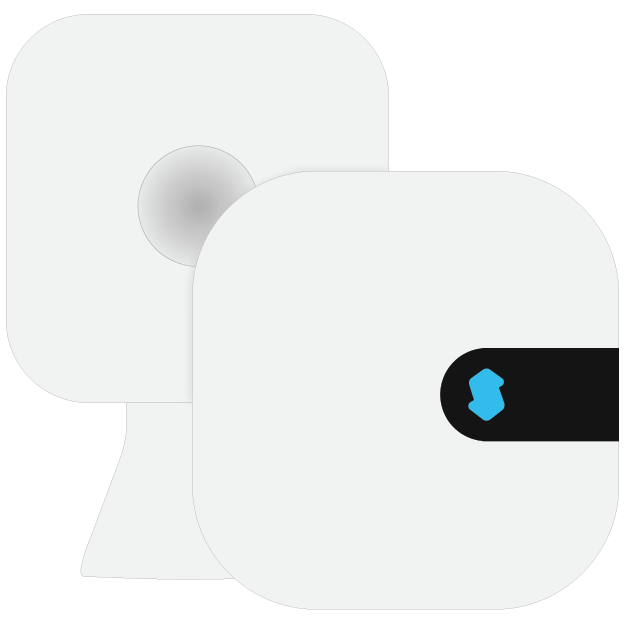

























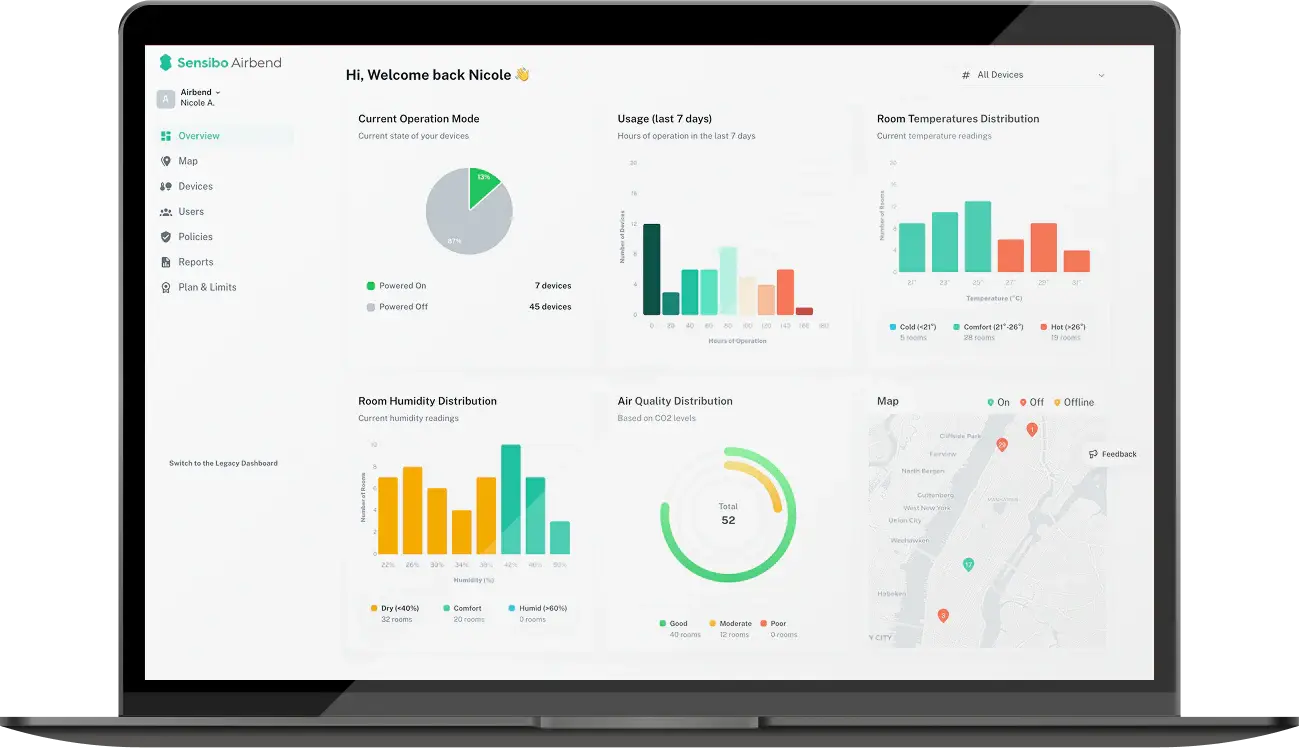





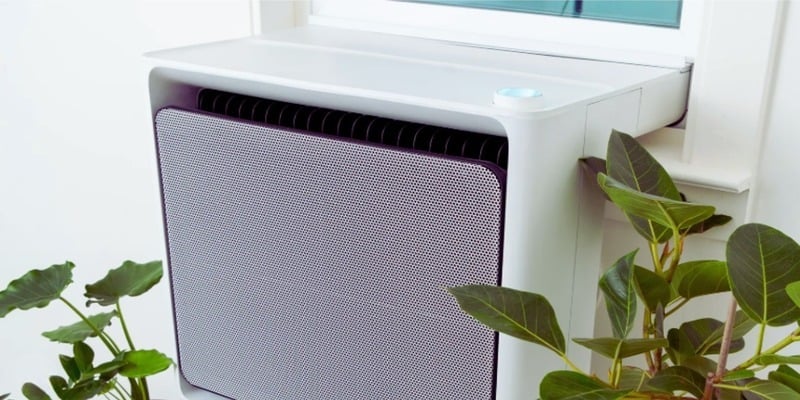
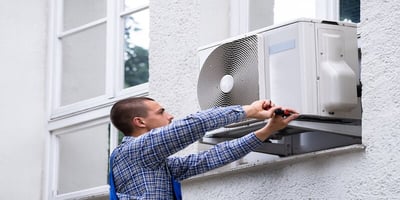
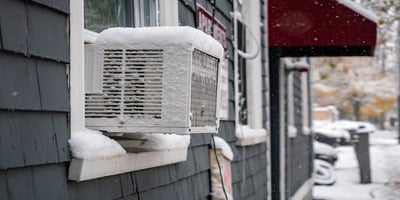

.jpg?height=200&name=close-up-heat-pump-outside-home%20(2).jpg)